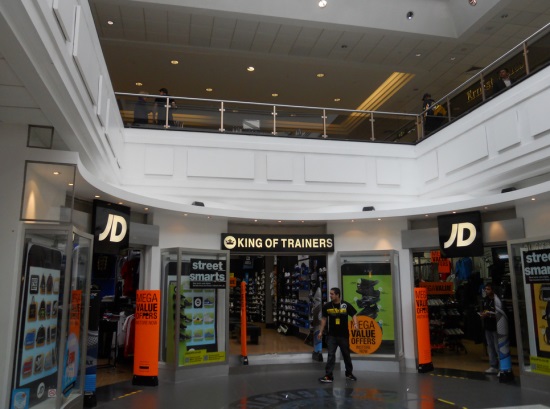A high number of retailers were forced to enter administration during the recession thanks to a combination of low consumer spending and a lack of willingness by banks to lend. While many simply faded from the high street permanently, La Senza being just one example, some found themselves in the fortuitous position of being rescued by larger, more successful groups.

Blacks Leisure was one such chain. Leisurewear retailer JD Sports paid £20 million to incorporate the outdoor retailer into its group, along with rival chain Millets – a decision which City experts are now questioning the wisdom of.
JD Sports experienced a like for like sales rise in its core sportswear stores of 7.5 per cent in the six months to August 3rd, benefiting from high consumer demand for sporting goods and a rapidly improving economic situation. However, its outdoor business failed to match this performance, racking up operating losses of £8.9 million in the same period.
Much of this loss is due to the heavy restructuring works ongoing at Blacks and Millets, as JD executive chairman Peter Cowgill made the decision to move Blacks’ distribution base and head office to the headquarters of JD in the North West. Additionally, Millets has benefited from the hiring of an entirely new management team which Mr Cowgill believes is more capable of helping the brand realise its potential.
While Mr Cowgill insists that the changes are “necessary for these businesses to deliver returns in the long term”, experts are now doubting whether the acquisition of two failing brands was the right move from a sports retailer which faces significant competition, not least from Mike Ashley’s Sports Direct chain.
However, Mr Cowgill insists that he believes in the future of both Blacks and Millets, saying; “I wouldn’t persevere with something that I didn’t think had prospects.”
Despite the losses JD managed to increase revenues slightly in the half year, from £556 million to £567 million. Furthermore, pre-tax profits climbed impressively to £6.1 million from £2.9 million in the previous financial year. In turn, this has allowed JD to claim it is “well placed” to meet full-year City forecasts.
JD is now monitoring the situation closely at both Blacks and Millets as it is believed the restructuring programme is now “more or less complete”. This means that sales and revenues should pick up during this month, with consistent improvements bringing the outdoor business in line with the core sportswear brand.
While it was undoubtedly a risky move on the part of JD to rescue two ailing firms during a period of economic turmoil, should both businesses pick up the group could well see excellent returns on its investment. However, should the opposite happen, it could spell trouble for a group whose main area of business is in a highly competitive market.
Do you think it is possible for brands which have entered administration previously to turn their fortunes around, or are these businesses doomed to failure more often than not?